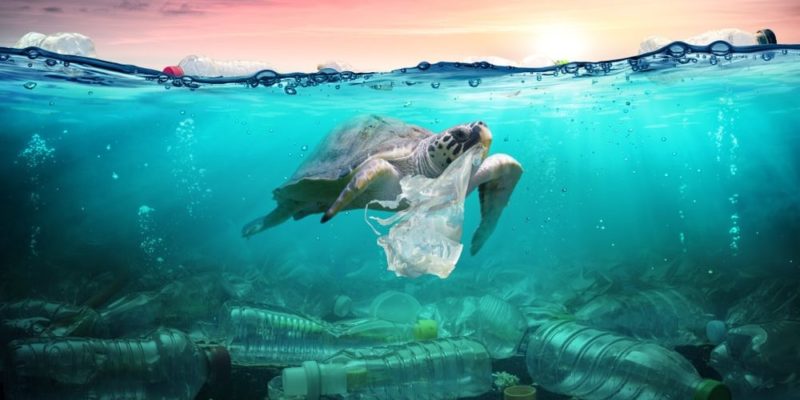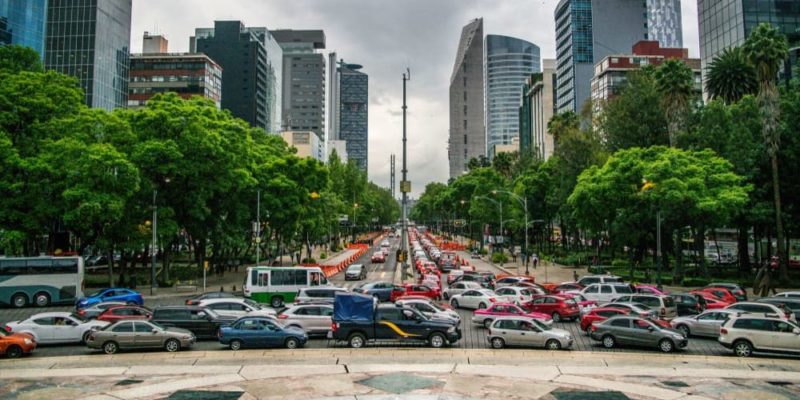We explain what environmental problems are and what their causes are. Also, some examples and ways to prevent them.

What are environmental problems?
Environmental problems are the harmful effects on the ecosystem that arise from different human activities generally as undesired and more or less accidental consequences.
When these types of problems are not corrected in time, cause unpredictable change in the environment which, in the long run, usually translates into environmental disasters, that is, tragic and catastrophic situations that involve (and come from) the deterioration of the environment.
Environmental problems are one of the main challenges of the industrialized world whose continuous production of consumer goods also requires the continuous input of raw materials, extracted directly from nature.
In that sense, the impact that the Industrial Revolution and the urban way of life has had on the global ecosystem has meant much more rapid changes than in the rest of human history.
That is the reason why numerous National and international organizations fight to promote ecological legislation in most countries and to reach agreements that allow us to avoid or at least slow down the pace of environmental deterioration as a result of our model of life.
See also: Environmental conservation
What are the environmental problems?

There are many forms of environmental problems, some with a greater impact on the environment, which makes them urgent to address, and others, on the other hand, that are more innocuous and simple. The main ones today would have to be:
- Deforestation This is understood as the indiscriminate felling of forests and green areas to use their wood in various industries (paper, logging, etc.) or to use the land for agricultural or livestock activities. This process, which prehistoric humanity began in its own way, has never occurred at such a ferocious pace as it does today, so much so that the replanting of forests is imperative to create a counterweight. The absence of trees deteriorates the soil, leaves it exposed to erosion, reduces the amount of oxygen in the world and increases the amount of atmospheric carbon, contributing to increasing the average temperature of our planet.
- Pollution. It refers to the adulteration of water, land or air through the addition of chemically reactive substances, capable of destroying ecosystems, making water unusable or generating diseases in both humans and other forms of life. This problem is one of the most serious, as it also leads to destructive phenomena such as acid rain (polluted rain), the toxic accumulation of plastic or the acidification of the seas, for example. All of this translates into chemical changes that are too rapid, which do not give life room to adapt to them, or to remedy them in its own way.
- Global warming. The planet is becoming increasingly hotter, at a much faster rate than it was in past times, and the logical person responsible for this is human beings. Most industrial activities, from livestock farming to the burning of fossil fuels, flood the atmosphere with carbon derivatives (carbon monoxide or carbon dioxide), which not only impoverish air quality, but remain in the atmosphere preventing the normal release of heat, and thus generating a greenhouse effect that is already melting the perpetual snow at the poles and increasing the water level. This translates into intense climate changes, the creation of new deserts, floods and the destruction of the planet's meteorological balance.
- Loss of biodiversity The extinction of numerous species, due to the destruction of their habitat or its contamination, or the interference of human beings in their food chains, leads to imbalances in biological circuits that can become critical for the world. For example, the gradual but constant disappearance of bees is leaving plants without pollinators, which would translate into loss of genetic variety and impoverishment of plant species.
Causes of environmental problems
The causes of most environmental problems are summarized in human industrial activity. These include factories and their solid, liquid and gaseous chemical waste, and the burning of fossil fuels to obtain energy or drive our vehicles.
Furthermore, the constant dumping of biological waste into the waters and other activities that make up our daily lives have a great environmental impact; they have been adulterating the world in which we live for almost two centuries. The consequences of this could be around the corner.
How to prevent or solve them

There is no simple and easy method to solve environmental problems, or even prevent them. But everything points to a sustainable development model that does not conceive natural resources as if they were an infinite source.
Furthermore, investment is necessary in promotion of activities that compensate for ecological damage made. Thus, it would be possible to minimize our main environmental problems. Some specific important measures would be:
- Stop producing plastics single-use, with which we are flooding the seas.
- Do not waste electrical energy whose production generally involves burning fossil fuels.
- Recycle materials diaries that would otherwise go to nature.
- give a proper disposal of chemical waste risky and be strict in the anti-pollution policies of large industries and manufacturers.
- Reduce car use and invest capital in the search and development of eco-friendly technologies.
- Implement in our countries a birth control.
See also: The three Rs
Environmental problems in Mexico

In Mexico, as in many countries, there are important environmental problems that deteriorate the quality of life of its inhabitants. The main ones of them are:
- Air pollution Since 1992, Mexico City has been declared by the UN as the most polluted in the world, due to the gases generated by the automobile fleet and large industries. This exposes citizens and the surrounding animal life to very high levels of carcinogenic and toxic elements such as cadmium, carbon oxides or frequent cases of acid rain.
- Deforestation Mexico loses, according to the Institute of Geography of the National Autonomous University of Mexico, about 500 thousand hectares of forests annually, which makes Mexico the fifth country in the world that destroys its jungles and forests the fastest.
- Chemical contamination of water Chemical spills into water are a major problem in Mexico, due to the laxity of state control and the proliferation of large industries. In August 2014, only about 40 thousand liters of sulfuric acid, an extremely lethal and corrosive organic compound, were dumped into the Sonora River, the same month that there was a famous oil spill in the Hondo River, Veracruz, the predecessor of the one that later occurred in San Juan. , Nuevo León.
- Sargassum overpopulation In the beach regions of southern Mexico, specifically in the Yucatan Peninsula, the accumulation of algae called sargassum has become a tourist and ecological problem. These algae have proliferated in a disorderly manner in the sea, in such a way that they compete with each other and impoverish marine waters, ending up dying and being washed ashore by the waves. There the once crystal clear waters of the Mexican Caribbean decompose and cloud.
Continue with: Environmental movement
References
- “Annex: Environmental problems” in Wikipedia.
- “Environmental issue” in Wikipedia (English).
- “Environmental problem” in Science Direct.
- “Environmental problems” at Lenntech.
- “Five of the world's biggest environmental problems” in Deutsche Welle.





